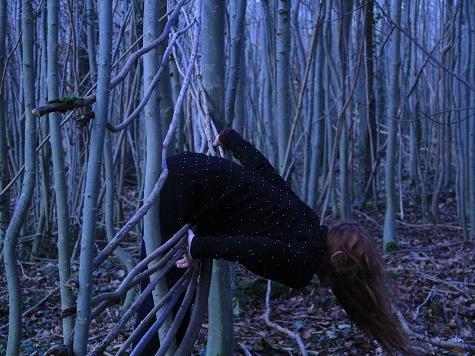Image: James Batchelor
International creator and choreographer Mårten Spångberg has been called the ‘bad boy’ of contemporary dance.
Working in a multiplicity of formats, he speaks of ‘choreography as expanded practice’, a mode of analysis and production that can be applied to any field of expression.
To Spångberg, choreography is a knowledge, rather than a set of directional tools with which to create dances. He defines choreography as ‘a structural capacity or discourse’ and sees dance moves as just one element.
‘We could use choreography to understand and predict the climate,’ he claimed.
Known on the international stage as a creator of works of all sizes, his performing career began in 1994. His choreographic practice began soon after, and his solo ‘Powered by Emotion’ is now considered to be a modern classic.
In 2004, Spångberg and architect Tor Linstrad launched the International Festival, a collaborative project presenting context-specific works in Sweden and internationally.
The aim of the International Festival is to avoid the establishment of a recognisable practice, blending architecture, performance and cross-disciplinary creative practice.
To Spångberg, multidisciplinary implies ‘the birth of something altogether different, the conception of a new possible discipline’. Yet, he also said that ‘discipline’ is quite an aged term.
Instead, he prefers to discuss ‘interesting’ art as something that disregards any limitations of discipline yet ‘stays faithful to itself as a knowledge or media’.
Artistic Director and CEO at Dancehouse Angela Conquet said contemporary dance is not necessarily the most glamorous art form, and can be challenging to the untrained eye, something Spångberg agrees with. Rather than a performance, he sees his practice as a means of organising time and space.
Spångberg is attentive to the role of individual audience members as co-producers of experimental work, and encourages the integration of everyday routines and digital technologies in live performance.
Understanding how politics and economics operate and function also helps Spångberg ‘grasp how come choreography and dance [are] what [they are]’.
His professional career has seen him organise and curate festivals across the world including Panacea Festivals, Stockholm from 1996 to 2005 and the International Summer Academy, Frankfurt in 2002 and 2004.
Spångberg has also pursued a career as a writer and as a teacher, currently serving as director of the MA in Choreography at the University of Dance in Stockholm.
The Keir Choreographic Award Season is at Dancehouse Melbourne 3 – 6 July & 10 – 13 July with the finals at Carriageworks 16 – 19 July.
Visit the Dancehouse and Carriageworks websites for more information.





